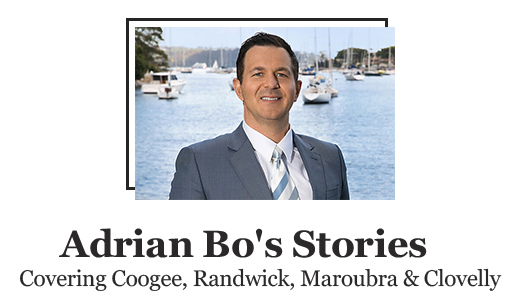The Father Of Coogee
Adrian talks about the Father of Coogee, Charles Catley including
➥ the small seeds he brought to Coogee
➥ the parcel of land he secured which included the Coogee Oval
➥ why the Bathurst Goldfields added to his fortune
➥ the landmark sandstone wall between Brook Street and Ormond Gardens
Hi, it’s Adrian Bo here, and today, I’m outside 108 Brook Street in Coogee, a beautiful sandstone block of apartments, to talk about the fascinating early days of the settlement we now know as the suburb of Coogee, in particular about a man called Charles Catley, who became known as the father of Coogee. Now, Charles Catley was born in 1825 in Melbourn. Now, not our southern state neighbours, being the iconic home of the forthcoming Australian Open and the Grand Prix, but a small Cambridgeshire village in the UK. He landed in Sydney in 1848 at the age of 23, got married to Charlotte McClenahan within two years, and had six children, and passed away, sadly, at the age of 88 in 1914. On arrival in Sydney as a convict, he built a simple bark hut on a parcel of land he bought right here, where I’m standing, at 108 Brook Street, in which he lived in initially. Now, Catley realised that the growing township of Sydney would need fresh vegetables, and the growing pilgrimage to Bathurst Goldfields also provided a great potential market for his gardening operation, so he purchased another parcel of adjoining land right here as well. Would you believe, the humble cauliflower turned out to be his most profitable vegetable product? Farmed on land bounded by Brook, Dolphin, and Mount Streets, some of which has now become the famous Coogee Oval.
This led Catley to building a two-storey, six-bedroom Georgian home using the stone, as you can see behind me, quarried from his land, which he named Cauliflower Hall, in which he lived in for the next 48 years until he passed. Catley had brought cauliflower seeds from his agrarian existence in the UK, and this proved to be a highly profitable decision, as he introduced this incredibly dense vegetable to the hungry growing nation. His wife, Charlotte, also established a shop near Coogee Beach catering to the growing flow of beach goers. On his death, the Bathurst Times reported that Charles Catley’s estate was valued at over 20,700 pounds, including 5,600 pounds of real estate, and 13,069 pounds of bank deposits. Cauliflower Hall was demolished many years ago, but a sandstone retaining wall remains here, which you can see behind me, on the boundary between 108 Brook Street and 6 to 8 Ormond Gardens on the corner. In many ways, that sandstone wall could be considered one of the original constructions in Coogee, and as such is recognised by the NSW gov’t. Back to the modern day, last weekend, I was delighted to create a new record in the South Coogee Endeavour 88 Mirvac estate when I sold 18 Fairsky Street for $2,765,000, beating my previous record.
This is no doubt due to my world class social media marketing systems which enable multiple offers and higher prices for all my listings, including this particular sale. In the 31 years I’ve been selling real estate in Coogee and surrounding suburbs, I’ve literally sold hundreds of properties from the old Catley estate where I’m standing today, as well as many others adjacent, including seven at 137 Brook Street, three at 136 Brook Street, four at 8 Brook Street, one at 75 Mount Street, A11 at 90 Mount Street, B6 at 90 Mount Street, two at 91 Mount Street, 87 Mount Street, four at 11A Mount Street, seven at 88 Dolphin Street, four at 88 Dolphin Street, 56 Bream Street, six at 67A Bream Street, six at 84 Bream Street, three at 18 Bream Street, six at 18 Bream Street, and also five at 180 Coogee Bay Road. I really hope you’ve enjoyed the story behind the father of Coogee. Such was the impact of Charles Catley that I’m not sure Coogee would’ve actually developed in the way that it was without his legacy. I really hope you enjoy your Coogee vegetables, in particular the dense and fulfilling cauliflower, from a whole new angle now, and always remember, your home is worth more with Adrian Bo.
After this episode was recorded we were delighted to have received a message from
Catherine, who’s great great grand aunt, Charlotte, married Charles Catley.
Catherine kindly pointed out a few corrections to the details that our sources had established
as well as some pronunciation corrections.
Catley is pronounced Cat-ly.
McClenahan is pronounced McC-Len-a-han.
Charles was a free settler not a convict.
Charles and Charlotte had 7 children, not 6.
We greatly appreciate Catherine’s observation of these key family details.


